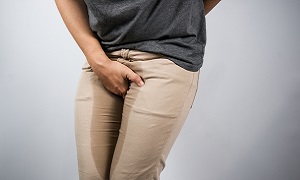Bladder Slings
The bladder sling procedure can help men suffering from urinary incontinence, i.e. loss of bladder control. The procedure has some complications associated with it and is generally recommended for men with mild to moderate urinary incontinence. Urinary incontinence usually occurs after prostate surgery, particularly for the men, who require prostatectomy for prostate cancer.
Purpose
Preparation
It is likely that your doctor will ask you to undergo a few tests before the procedure, which can include a cystoscopy, a urodynamic study, and a 24-hour pad test. Sometimes, urine tests or an electrocardiogram might also be required.
You might also be asked to avoid taking any aspirin or blood-thinning medication. Your doctor might also ask you to consume only clear liquids the night before the surgery. This reduces the risk of contamination as it helps to keep the bowel clean.
Do not eat or drink anything after midnight the day before the surgery. Remember that any medication that you take in the morning on the day of the surgery should be taken with a tiny sip of water.
Procedure
First, you might receive general anesthesia or local anesthesia. Then your surgeon will create an incision, through the perineal tissue, i.e. the area between the scrotum and the anus. Then your surgeon will expose the urethra, and use a supportive sling, i.e. a mesh-like surgical tape, around part of the urethra bulb which covers the most part of the urethra. It is close to where it enters the area of the urethral sphincter.
Wrapping the tape around the urethra bulb makes the sling move gently into the urethra into a new position, and increase the resistance in the area. This helps to lend support to the bladder neck.
The sling support needs absorbable sutures, in the perineum area. You might experience some pain after the surgery, though it is usually mild, and can be managed with medications.
Recovery
After your surgery, you might have a catheter exiting from the urethra for a short period. This catheter is in place so that you can empty your bladder, since there might be swelling after surgery, making it harder to urinate.
Once the swelling goes down, you should be able to urinate on your own and empty your bladder quite well. However, it is likely that your normal pattern of urination will not return for a few weeks. You should be able to resume a normal diet after the surgery.
The majority of men who undergo the procedure are either cured or see a significant improvement afterward. Men who do not see good results may choose to undergo recurrent urinary leakage, at a later date.
Risks & complications
Mesh slings generally have a higher rate of complications as compared to those made of native tissue. For example, synthetic mesh might cause long-term pain or infection, as well as mesh erosion.
Some of the possible complications include infection, scarring, inflammation, pain, fatigue, bleeding, etc.



